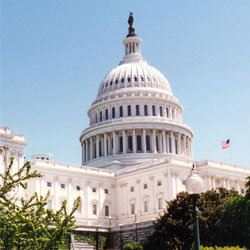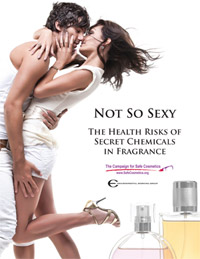Urge Senator Snowe and Senator Collins to Co-Sponsor the Safe Chemicals Act of 2011


My nephew absolutely adores the movie Toy Story, and is particularly infatuated with the character Woody. He owns the Woody doll, loves to scream out “Howdy, Partner!,” and would probably watch Toy Story on repeat for HOURS if we let him. 
I also know if my nephew saw some canned Campbell’s soup with his buddy Woody on the cover, he would beg his mom to purchase it. She most likely would, thinking, “It’s soup. It’s gotta be better for him than most of the other junk food out there, right?”
WRONG.
As Seventh Generation pointed out in a recent blog post, BPA is showing up in many canned products, specifically targeted to kids. The endocrine disrupting chemical was found in soups, juices, and veggies at disturbing levels. Campbell's Toy Story Fun Shapes was no exception.
My 2-year-old nephew is very excited for Christmas. When I asked him what he would like Santa (aka, me) to bring, he exclaimed, “Toyyyyys!!!!” I should have known.
Being the fastidious Aunt I am, I started researching presents. I came across what appeared to be common toys: train sets, stuffed animals, fire trucks, building blocks, books, puzzles. Then I came across a startling website that exposed the toxic truth behind many of today’s popular toys.
Toxic Toys R Us is working to inform consumers and investors about the dangerous chemicals lurking in children’s toys at Toys R Us—particularly PVC--the poison plastic. PVC has been linked to chronic diseases in children, birth defects, cancer, endocrine system disruption, reproductive impairment, and immune system suppression. Bottom line: PVC is really bad news. 
You may be wondering why they are targeting just Toys R Us when there are numerous toy stores on the market. In 2008, Toys R Us made a promise to reduce PVC plastics, phthalates, and lead in children’s and infant’s toys--a promise they broke. Toys R Us continues to sell products containing PVC without warnings or labels of any kind.
A report from the Center for Health, Environment & Justice (CHEJ) points out “in order for PVC to be used in toys, it must be mixed with lead, cadmium or organic chemicals containing tin.” When ingested, these chemicals are extremely toxic, especially for children. I think about my nephew playing with a PVC-laden toy, and imagine him biting it, or sticking it in the mouth of his younger sister. Though toys aren’t meant to be eaten, kids inadvertently ingest chemicals from them all the time.
What can you do to make sure the kids you care about aren’t being exposed to toxic chemicals? Take action and sign a petition urging Congress to eliminate PVC in toys. Share this story with your friends and family to help expose the truth. And most importantly, avoid buying toys containing PVC. Sign up with CHEJ to download a PVC-Free Guide for Your Family & Home.
***
Here are some companies and makers of non-toxic toys, suggested by our readers:
My friends and I take Halloween very seriously. Each year we have a “group theme,” and work on our costumes for weeks leading up to the big day.
Although we consider ourselves Halloween experts, we were in the dark about how horrifically toxic this holiday can be. Lead in children’s face paints, phthalates in masks, and costumes made from PVC are just a few of the ghastly truths I unveiled in my research. Luckily, thanks to several informative blogs and websites, there are ways to have a Green Halloween.
Some tips:
 shouldn’t be inhaled! As that is pretty much impossible to avoid, opt for a wig instead.
shouldn’t be inhaled! As that is pretty much impossible to avoid, opt for a wig instead.We know that the long-list of hazardous chemicals and products out there is overwhelming. Sometimes it feels like no matter how much you educate yourself, a new report emerges with evidence of another carcinogen, another endocrine disruptor.
So what should you do if you’re trying to keep your family safe but don’t have time to conduct your own research? Check out the HEALTHY LIVING section of our site, where you’ll find quick facts on environmental toxins and how to stay safe. We cover everything from Cosmetics to Cleaning Products and some in between. You can even print them out to keep on you while you shop.
A couple weeks ago I was bragging to my aunt about an upcoming camping trip. I told her of the site’s pristine hiking trails, its beautiful sandy beach, and its reputation for being a respite from the hustle and bustle of daily life. My aunt listened, smiled at me, and left me with the following sentiment: “Just make sure you bring tons of bug spray. They have mosquitoes up there the size of small birds.” Ugh.
Ok, so bugs are more or less inevitable in the summer, right? Especially while on a camping trip.  But for four days in a row, should I really douse my body in DEET and other nasty chemicals? Thankfully, our wonderful intern Isabel got right to work and found some natural alternatives & tips for pest protection.
But for four days in a row, should I really douse my body in DEET and other nasty chemicals? Thankfully, our wonderful intern Isabel got right to work and found some natural alternatives & tips for pest protection.
The following bug repellents are all free of DEET, parabens, phthalates, PEG’s, sulfates, dioxanes, propylene glycols, and synthetic fragrances. Best of all, they all scored a zero in the Skindeep database!
Pay attention to these facts about bugs, to keep you and your fam bite-free!
Here's wishing you a happy, healthy, and pest-free time during all of your outdoor activities!
There’s nothing funny about infertility, miscarriage, lowered sperm counts, early onset puberty, or any other reproductive health problem. Unfortunately, chemicals in everyday products have been linked to all of these diseases and more. Congress has the opportunity to change this by supporting the Safe Chemical Act of 2010. You can help, too, by watching this video from Safer Chemicals Healthy Families and urging Congress to make sure the products we reach for, sleep on, and eat from every day aren’t loaded with toxic chemicals.
Chemicals aren’t sitting still and neither should you. Take action today.
A while back, I did a post on my arch-nemesis –the perfume aisle. I couldn’t figure out why just the act of walking through it was giving me migraines, making me sneeze, and leaving me feeling miserable.
 In their new report, “Not So Sexy: The Health Risks of Secret Chemicals in Fragrance,” the Campaign for Safe Cosmetics reveals exactly why fragrances can and do make people sick—they are filled with hidden, hazardous chemicals.
In their new report, “Not So Sexy: The Health Risks of Secret Chemicals in Fragrance,” the Campaign for Safe Cosmetics reveals exactly why fragrances can and do make people sick—they are filled with hidden, hazardous chemicals.
The Campaign for Safe Cosmetics commissioned tests of 17 fragranced products at an independent laboratory. The Environmental Working Group assessed data from the tests and the product labels. The products that were tested -- including celebrity brands J Lo Glow and Britney Spears’ Curious, and colognes Abercrombie & Fitch Fierce and Old Spice – contained multiple allergens and hormone disruptors, and many secret chemicals not listed on labels.
On average, these 17 products contained:
People are unknowingly exposed to hazardous chemicals that are hidden in their favorite perfumes, colognes and body sprays—chemicals that are then absorbed into people’s bodies. Even babies, our most vulnerable population, have these chemicals in their blood at birth. This is unacceptable.
Here’s how you can help change this:
Everyone has the right to know what’s in the products they spray on their bodies and lather on their skin. Please show your support by standing up to the chemical industry today.
We occasionally get dazed and confused looks when we mention Planned Parenthood is involved in environmental health. People associate us with many things--abortion, birth control, condoms, annual exams, even cervical cancer screenings--but this environmental piece has really thrown some for a loop.
Our brilliant colleagues at Planned Parenthood Minnesota, North Dakota, South Dakota, bridged this gap with a great little video on the relationship between environmental health and choice. Enjoy!
Bill S.247, An Act Relating to Bisphenol A, has passed in Vermont! This new bill will phase out BPA in reusable food and beverage containers and in the plastic containers, jars or cans that store infant formula or baby food, in favor of safer alternatives.
We thank all of you who helped pass this bill by contacting your legislator, writing a letter to the editor, or educating your friends and family on the harmful effects of BPA. Because of you, the Vermont House of Representatives overwhelmingly supported the bill and passed it quickly.
As you know, we believe it is our responsibility as a health care organization to help our patients make the link between our health and the products we put in our bodies, on our bodies, and in our homes. S.247 is an important step in providing the much needed information about what products these harmful chemicals are in so that men and women who are planning their families can ensure that the products they use on a daily basis do not hinder their ability to have a safe and healthy pregnancy and family.